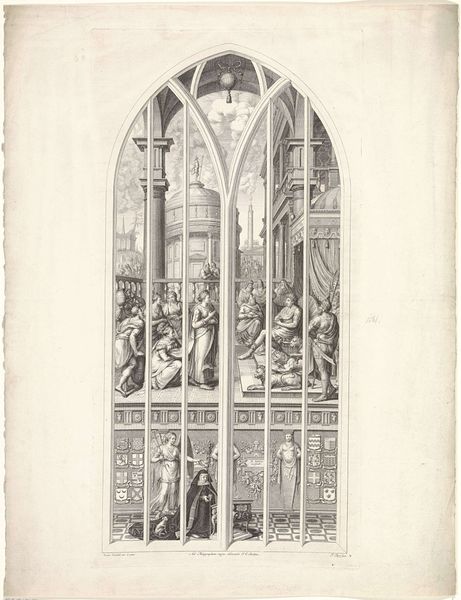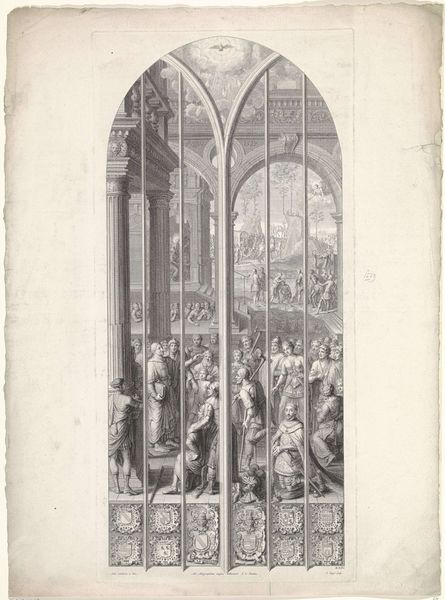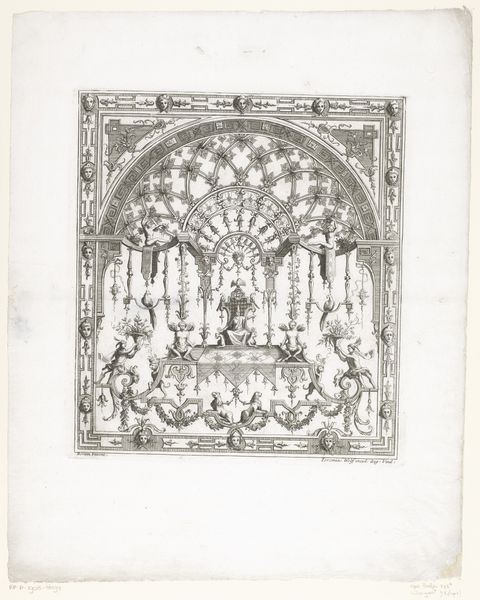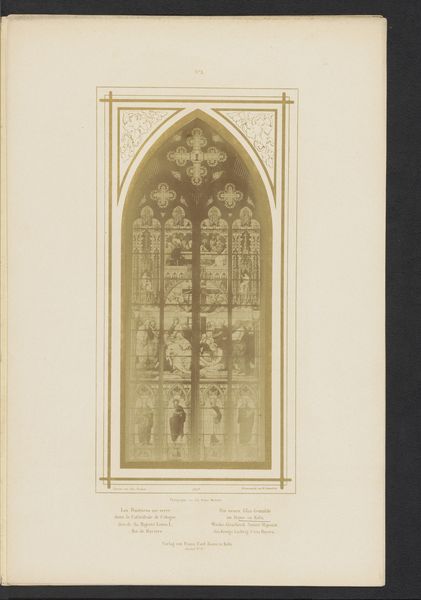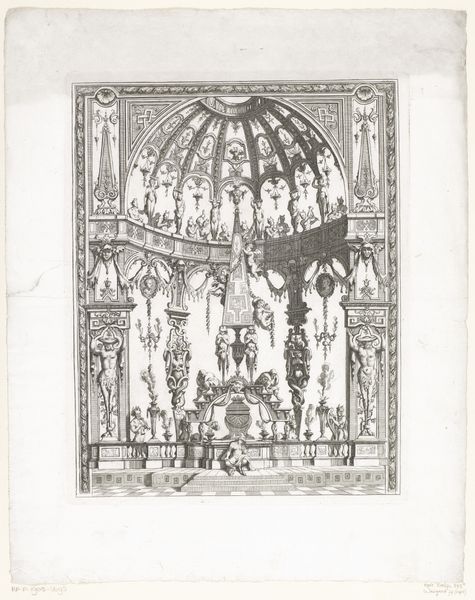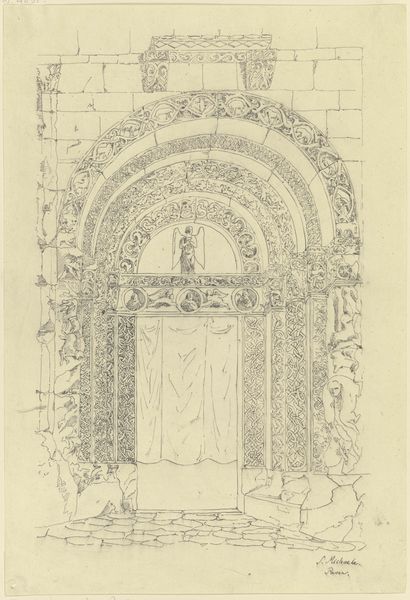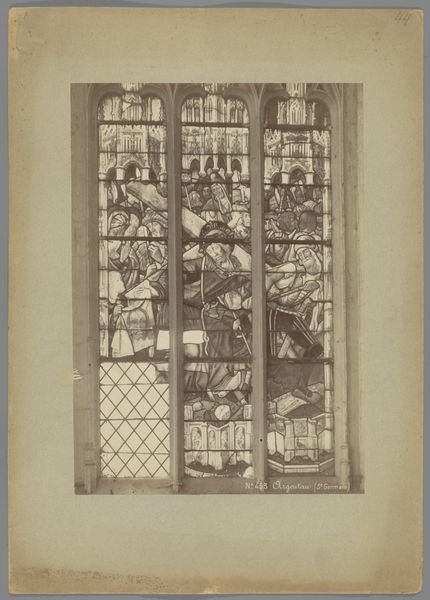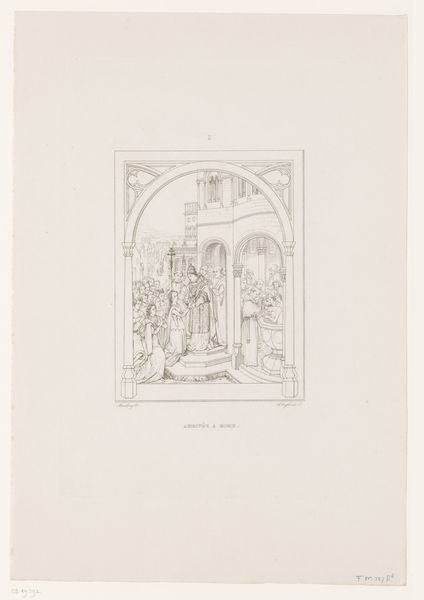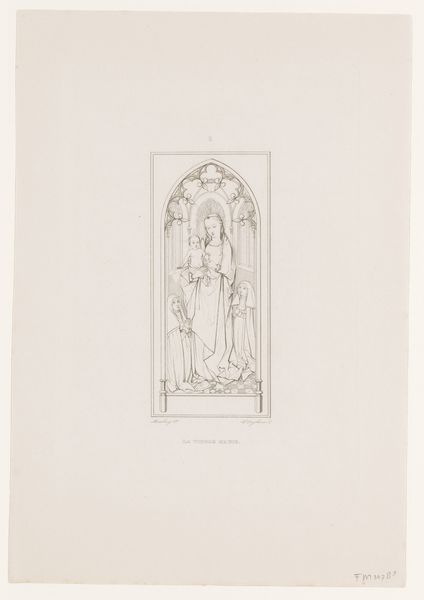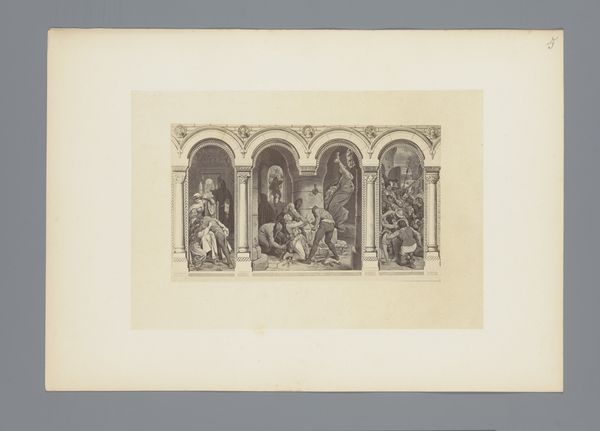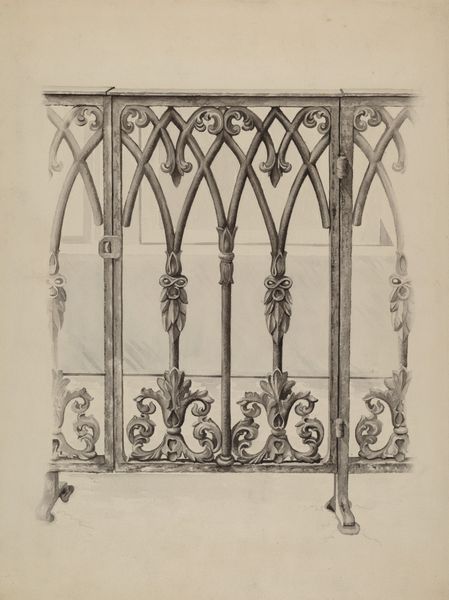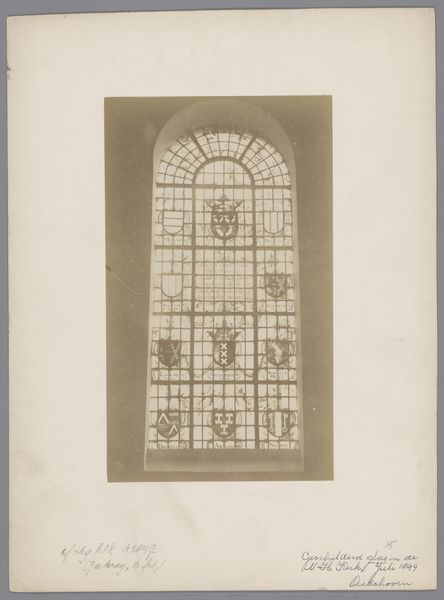
graphic-art, print, engraving
#
graphic-art
#
16_19th-century
# print
#
old engraving style
#
19th century
#
history-painting
#
engraving
Dimensions: height 582 mm, width 452 mm
Copyright: Rijks Museum: Open Domain
Jan Willem van Borselen created 'Triumph of Freedom of Conscience' using lithography, a printmaking process that relies on the chemical repulsion between oil and water. The image we see is made through a labor-intensive process. The artist would have drawn the design on a flat stone or metal plate with a greasy crayon or ink. This surface is then treated so that the image attracts ink while the non-image areas repel it. Paper is pressed against the plate, transferring the inked design, and then peeled away, leaving a printed image on the paper. In this case, the design is very detailed. Lithography made art more accessible, and was particularly suited to political and social commentary, reaching a broader audience than traditional painting. 'Triumph of Freedom of Conscience' shows the artist's deep involvement with social and political themes of his time. The choice of lithography democratized art, bringing it closer to the daily lives of people and allowing for wider distribution of ideas and values.
Comments
No comments
Be the first to comment and join the conversation on the ultimate creative platform.

